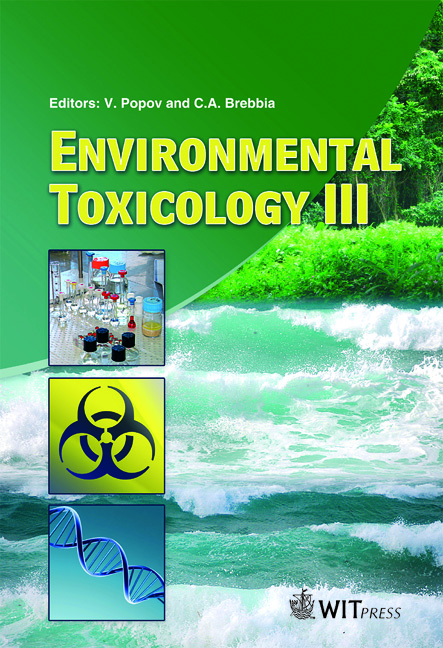Poultry Fungal Contamination As A Public Health Problem
Price
Free (open access)
Transaction
Volume
132
Pages
9
Page Range
45 - 53
Published
2010
Size
261 kb
Paper DOI
10.2495/ETOX100051
Copyright
WIT Press
Author(s)
C. Viegas, C. Veríssimo, L. Rosado & C. Silva Santos
Abstract
A descriptive study was developed to monitor poultry fungal contamination. Five air samples of 100 litres through impaction method were collected and 4 swab samples from surfaces were also collected using a 10 cm square of metal. Simultaneously, temperature and humidity were monitored as well. Twenty different species of fungi in air were identified, being the 4 most commonly isolated the following genera: Cladosporium (40,5%), Alternaria (10,8%), Chrysosporium and Aspergillus (6,8%). Concerning surfaces, 21 different species of fungi were identified, being the 4 genera more identified Penicillium (51,8%), Cladosporium (25,4%), Alternaria (6,1%) and Aspergillus (4,2%). In addition, Aspergillus flavus also isolated in the poultry air, is a well-known producer of potent mycotoxins (aflatoxins) and besides this species other isolated genera, like Fusarium and Penicillium, are also known as mycotoxins producers. Also noteworthy is the fact that Aspergillus fumigatus, one of the species isolated in air and surfaces, is one of the saprophytic fungi most widespread in air and is capable of causing severe or sometimes fatal aspergillosis. There was no significant relationship (p>0,05) between fungal contamination and temperature and humidity. Keywords: poultry, fungal contamination, mycotoxins, public health problem. 1 Introduction Fungi presence requires ideal conditions of temperature, humidity, oxygen, carbon sources, nitrogen and minerals. Their biological activities of
Keywords
poultry, fungal contamination, mycotoxins, public health problem





